.
24.02.2015
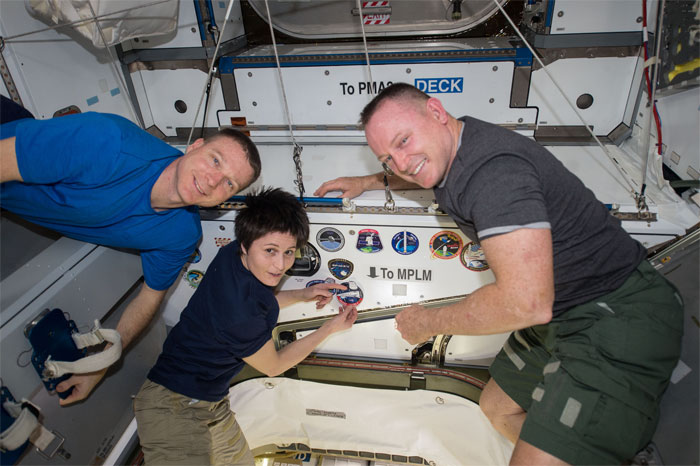
The key players in Wednesday’s EVA-30 will be Barry “Butch” Wilmore (right) and Terry Virts, with Samantha Cristoforetti (center) as the Intravehicular (IV) crew member and operator of the 57.7-foot-long (17.6-meter) Canadarm2. Photo Credit: NASA
.
Following hard on the heels of Saturday’s triumphant EVA-29—during which Expedition 42 astronauts Barry “Butch” Wilmore and Terry Virts spent almost seven hours laying and configuring about 340 feet (103 meters) of cables in readiness for the arrival of two International Docking Adapters (IDAs), later this year—the coming week will see two more spacewalks outside the International Space Station (ISS) to prepare for a major relocation of hardware and to establish a communications infrastructure for future visiting vehicles. Current planning anticipates EVA-30 to occur Wednesday, 25 February, and EVA-31 on Sunday, 1 March, shortly before the scheduled return of Wilmore and his Soyuz TMA-14M crewmates Aleksandr Samokutyayev and Yelena Serova to Earth on 12 March.
As described in AmericaSpace’s EVA-29 preview article, the tasks of the first spacewalk were labeled “IDA Prep” and form part of the critical “IDA Pathway,” in anticipation of the arrival of IDA-1 aboard SpaceX’s CRS-7 Dragon cargo ship in June 2015 and IDA-2 aboard the CRS-9 mission in December. Two Pressurized Mating Adapters (PMA-2 and 3) will be outfitted with these IDAs, with IDA-1 interfacing with PMA-2 at the extreme “forward end” of the Harmony node and IDA-2 attaching to PMA-3, whose eventual location will be the space-facing (or “zenith”) port of the same module. As previously outlined by AmericaSpace, the IDAs will serve to convert the docking apparatus of the PMAs from the shuttle-era Androgynous Peripheral Attach System (APAS)-95 into the new Soft Impact Mating and Attenuation Concept (SIMAC), for use by Boeing’s CST-100 and SpaceX’s Dragon V-2 crewed vehicles from 2017 onward.
During EVA-29, Wilmore and Virts not only succeeded in completing all of their allotted tasks, but also pressed into several “get-ahead” elements of work for EVA-30. Specifically, Virts translated aft, toward the forward end cone of the U.S. Destiny laboratory, in order to set some inhibits in place to avoid the risk of any “hot” mates or demates of cables during the latter phases of the IDA Prep. Part of the setting of these inhibits required him to unplug four electrical connectors to temporarily remove power, but after some difficulty and an increase in the carbon dioxide level within his Extravehicular Mobility Unit (EMU), it was decided by Flight Director Tony Ceccacci to call it a day and bring the spacewalk to a close. Notwithstanding this disappointment, the Expedition 42 crew—which consists of Wilmore, Samokutyayev, and Serova, who arrived aboard the ISS in September 2014, and the Soyuz TMA-15M team of Virts, Anton Shkaplerov, and Italy’s first woman in space, Samantha Cristoforetti, who have been aboard since November—is in pole position to continue what is already shaping up to be a spectacular series of EVAs.
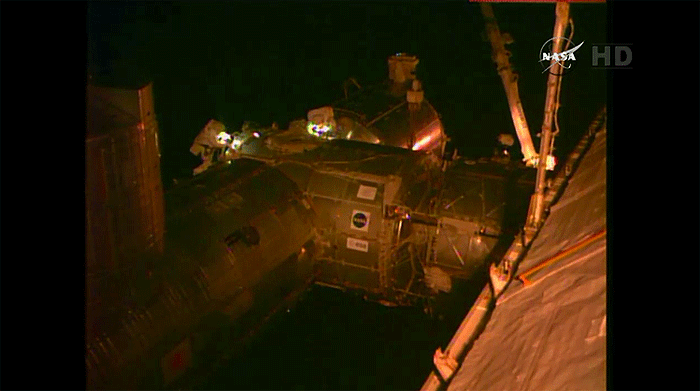
Assuming the plan holds to execute EVA-30 on Wednesday, 25 February, the spacewalkers will follow a similar protocol to yesterday, being assisted by Shkaplerov and Cristoforetti into the Quest airlock. They will conduct 60 minutes of “pre-breathing” on masks, during which time the inner “equipment lock” of the airlock will be depressed from its ambient 14.7 psi to 10.2 psi. Upon completion of this well-trodden protocol, Wilmore and Virts will don and purge their EMUs and the atmosphere will be repressurized back up to 14.7 psi. This will permit the spacewalkers to enter a nominal pre-breathing regime, lasting 50 minutes, followed by another 50 minutes of In-Suit Light Exercise (ISLE). The latter was first trialed on the STS-134 shuttle mission in May 2011 and will involve Wilmore and Virts flexing their knees for about four minutes, resting for 60 seconds, then repeating until the 50 minutes are up. This technique serves to rapidly remove nitrogen from their bloodstreams, thereby preventing a potentially fatal attack of the “bends.”
At length, the fully-suited pair and their equipment—including the Simplified Aid for EVA Rescue (SAFER) units, affixed to the lower section of their life-sustaining backpacks—will be transferred by Cristoforetti and Shkaplerov from the equipment lock into Quest’s outer “crew lock.” Hatches between the two locks will be closed and depressurization will get underway. When it reaches 5 psi, the process will halt for standard leak checks, after which depressurization will continue until the crew lock reaches a condition of near-vacuum. EVA-30 will officially begin when Wilmore and Virts transfer their suits’ critical life-support utilities over to internal battery power. As with EVA-29, Wilmore will lead EVA-30, clad in a suit with red stripes on its legs, whilst Virts wearing a pure white suit. Overseeing all three spacewalks is Expedition 42 Lead Flight Director Tomas Gonzales-Torres—who previously worked as Lead EVA Officer for STS-125, the final shuttle servicing mission to the Hubble Space Telescope (HST) in May 2009, before being selected as a flight director in October 2011—although the respective Flight Directors for EVA-30 and 31 are Greg Whitney and Tony Ceccacci respectively.
Mr. Gonzales-Torres, together with ISS Operations Integration Manager Kenny Todd and Lead EVA Officers Karina Eversley, Sarah Korona, and Art Thomason, spoke to the media last week at the Johnson Space Center (JSC) in Houston, Texas, and outlined the importance of these EVAs and their integral role in the future expansion of the ISS.
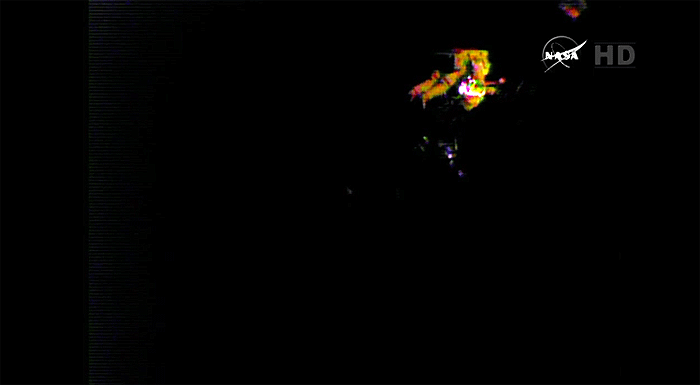
The principal aims for EVA-30 on Wednesday are to complete the IDA Prep work, prepare the forward and aft Common Berthing Mechanisms (CBMs) of the Tranquility node for the July 2015 relocation of the Leonardo Permanent Multipurpose Module (PMM) and the September 2015 arrival of the Bigelow Expandable Activity Module (BEAM) and perform some much-needed lubrication work on the Latching End Effector (LEE) of the station’s 57.7-foot-long (17.6-meter) Canadarm2 robotic arm. As with EVA-29, Wilmore will be first to depart the Quest airlock and Virts will head to Destiny’s forward end cone to continue the installation of inhibits, effectively “unplugging” visiting vehicle power, so that there is no risk of “hot” mates or demates during the remainder of the cable work. Elsewhere, Wilmore will head to the forward end of Harmony and set down a bag for the removal of PMA-2’s thermal and Micrometeoroid Orbital Debris (MMOD) cover. With Virts having finished his task, he will join Wilmore and the duo will complete the IDA Prep task, working on the starboard and port sides of PMA-2 respectively. When this work is completed, Virts will head back to Destiny’s forward end cone to remove the inhibits, re-mate connectors, and thus restore power and data capability for future visiting vehicles.
The two men will then return to the airlock, with Virts stowing the Starboard IDA Cable Bag—intentionally left outside at the end of EVA-29—and Wilmore bringing the bagged PMA-2 cover. They will retrieve additional bags for their next tasks and part ways. Virts will move to the External Stowage Platform (ESP)-2, on the port side of Quest, to configure and ingress a foot restraint, which will allow him to begin the lubrication of the LEE, which has become somewhat “sticky” in the 14 years since its April 2001 launch. At the controls of Canadarm2 will be Samantha Cristoforetti, who will guide the robotic arm into close proximity to Virts for the task.
Lubrication of the LEE was never intended to be done by spacewalkers, so a Ballscrew Lubrication Tool (BLT)—which consists, according to Lead EVA Officer Sarah Korona, of a probe, wire ties, and lots of tape—will be employed to apply lubricant from a Grease Gun. Working “in the blind” at certain stages, Virts will lubricate five portions of the LEE, including the ballscrews, equalization brackets, and latch deployment rollers for its four extended latches. He will also lubricate the Rigidized Central Ballscrew, which runs through the core of the LEE, and will keep EVA wipes handy to clean up any fragments of grease. The LEE latches will then be retracted by Cristoforetti, to expose the two linear bearing tracks, thereby allowing him to lubricate both sides on all four latches.
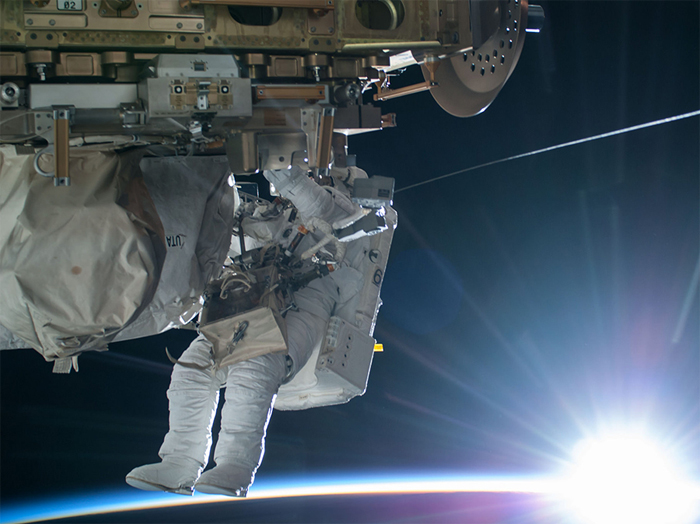
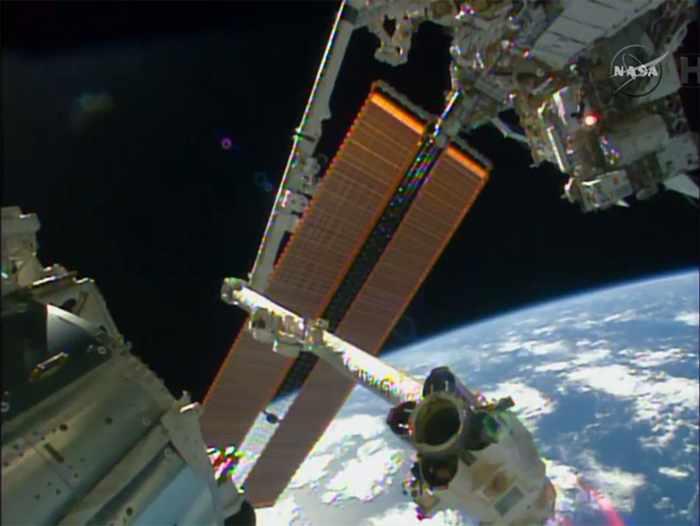
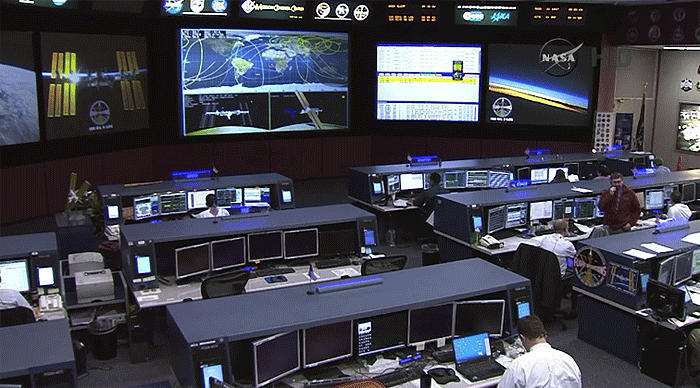
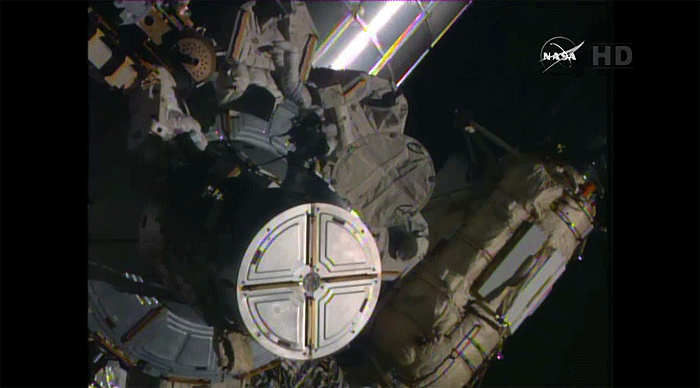
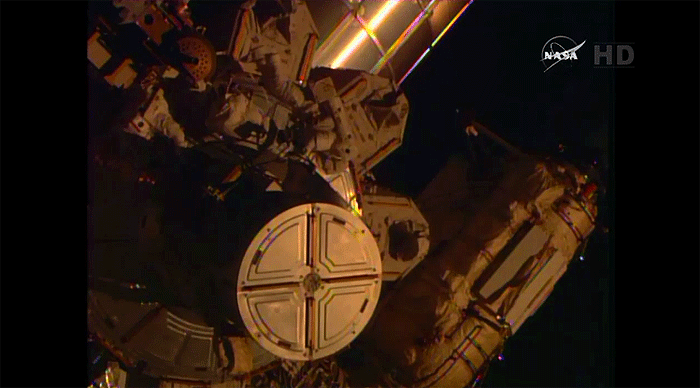
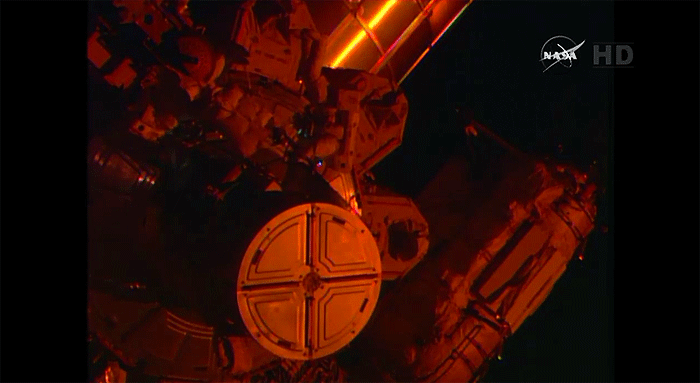


With Virts busy with this intricate task, Wilmore will head to the Port Tool Box on the Z-1 truss—atop the zenith face of the Unity node—and collect a socket, before heading to the Tranquility node. His first task will be at the forward end of the node, where he will remove a Non-Propulsive Valve (NPV), in order to aid clearances when the Leonardo PMM relocation takes place in the summer, and fit a Vent Cover Plate in its place. He will translate to the node’s starboard “end” to remove an obstructive handrail, before moving to the forward CBM to release eight Launch Locks and open a flap for camera views. This port will be the new location for the Leonardo PMM. Wilmore will then move to Tranquility’s aft CBM and complete exactly the same preparatory task, setting up this port for the arrival of BEAM. After each activity is completed, Mission Control will command the CBM “petals” to a 45-degrees-open position, then close them, with Wilmore visually verifying their satisfactory operation and performance. He will then return his socket to the Z-1 Port Tool Box and return to the airlock, joining Virts, to conclude EVA-30.
If sufficient time remains in the spacewalk—which is currently expected to last in the region of 6.5 hours—the astronauts may put wire ties on the central S-0 truss, to prepare for Sunday’s EVA-31, and possibly remove a dimmed light from a camera port on the lower outboard face of the P-1 truss and bring it inside for repair. Other potential get-ahead tasks include the reconfiguration of the Crew and Equipment Translation Aid (CETA) Carts, placing them in a lower profile on the Mobile Transporter (MT), tying brake handles, removing a coupler and a swing-arm, and stowing them out of the way, as well as fitting a handrail clamp over a known sharp edge, close to the Quest airlock.
Quelle: AS
...
Update: 25.02.2015
.
Wilmore, Virts Get Ready for Second Spacewalk

ISS042E283203 (02/21/2015) — NASA astronaut Terry Virts Flight Engineer of Expedition 42 on the International Space Station is seen working to complete a cable routing task while the sun begins to peak over the Earth’s horizon on Feb. 21 2015.
-
Ground controllers have maneuvered the space station’s large robotic arm Canadarm2 in place for work planned for Wednesday’s spacewalk. Spacewalkers Barry Wilmore and Terry Virts will start their second spacewalk at 7:10 a.m. EST to lay more cables and lubricate one of Canadarm2’s two latching end effectors, which serve as tip or base for the robotic arm. They will also prepare the Tranquility module for the relocation of the Permanent Multipurpose Module and the new Bigelow Expanded Activity Module later this year.
.

The leading end effector of the Canadarm2 (bottom foreground) will be lubricated Wednesday when astronauts Barry Wilmore conduct their second spacewalk. Credit: NASA TV
Quelle: NASA
...
Update: 12.55 MEZ / NASA-TV LIVE
.

...





...13.15 MEZ


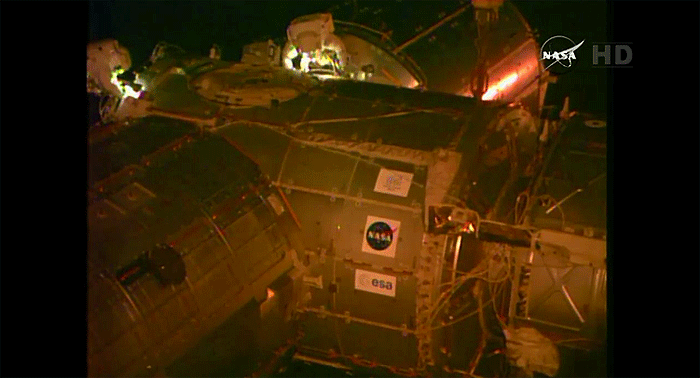
... 13.40 MEZ
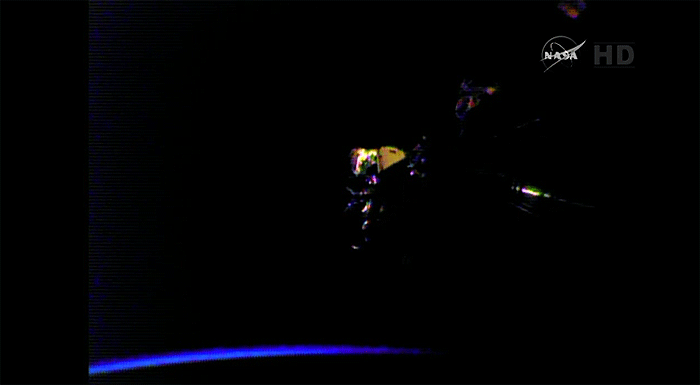

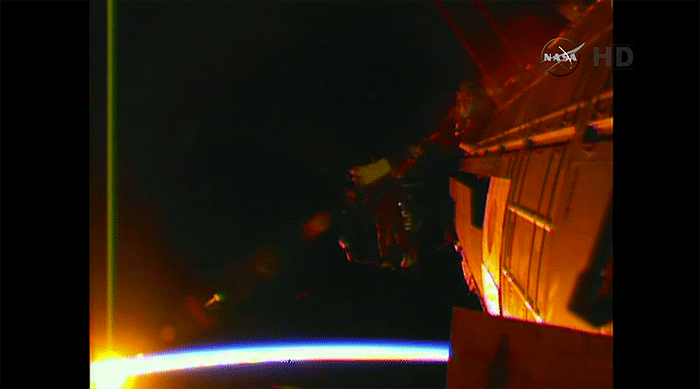
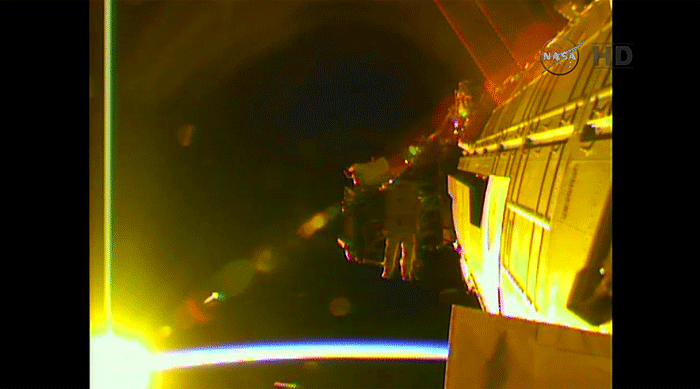
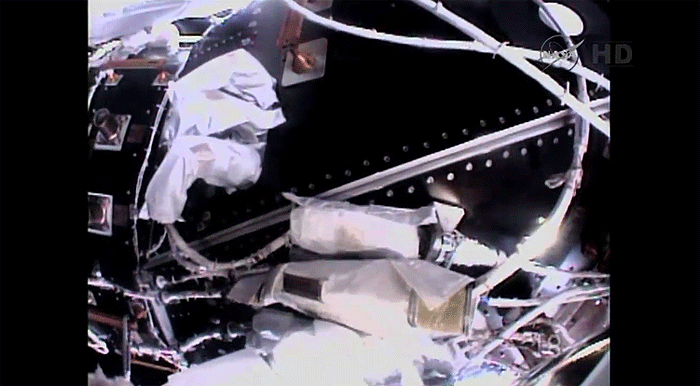
...14.10 MEZ
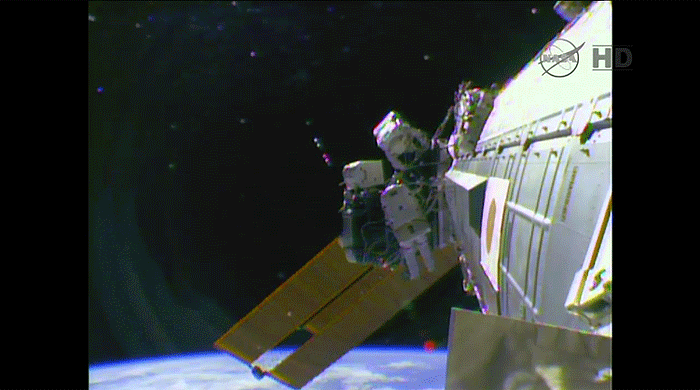



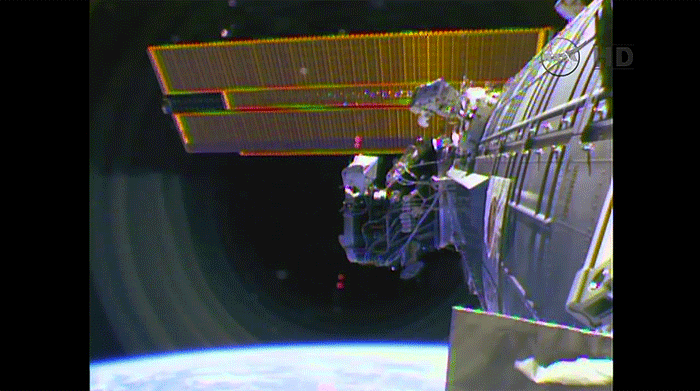

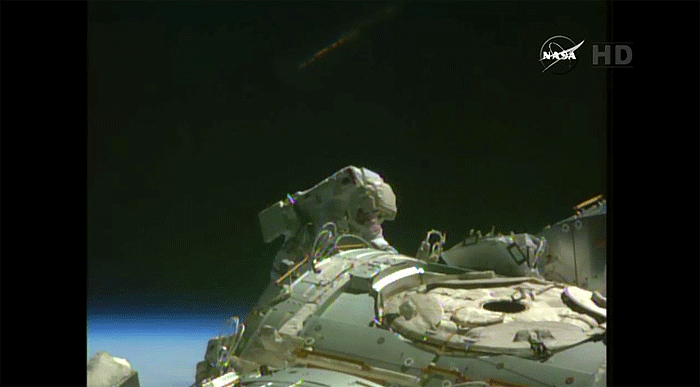
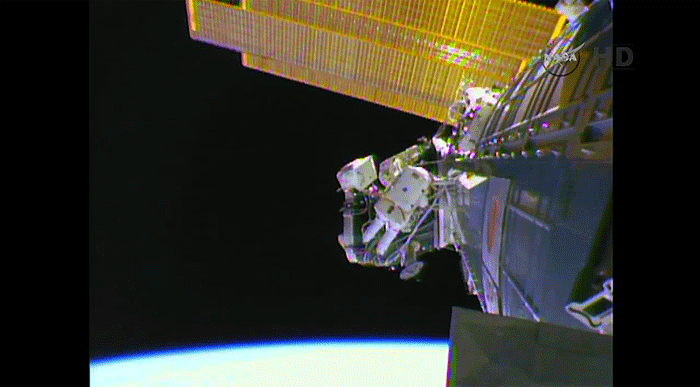
...14.40 MEZ

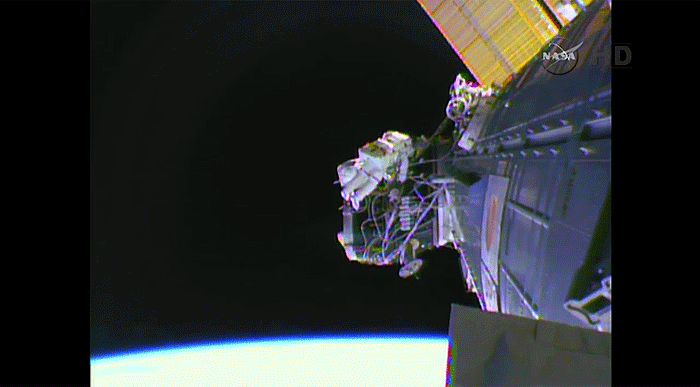
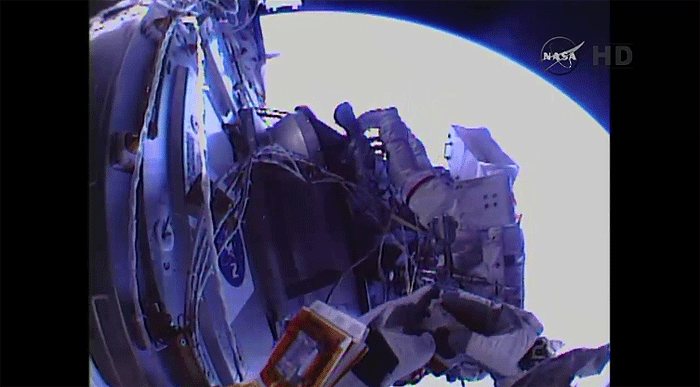
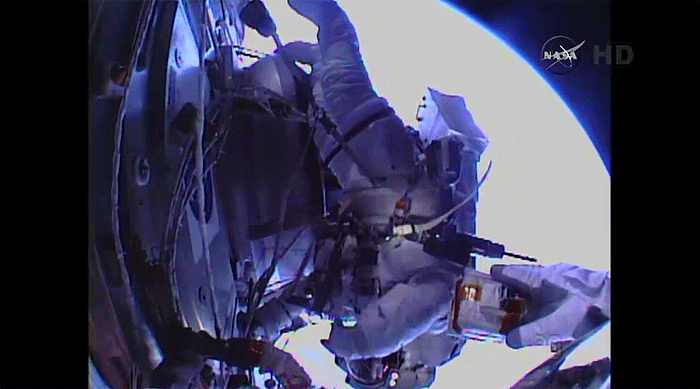
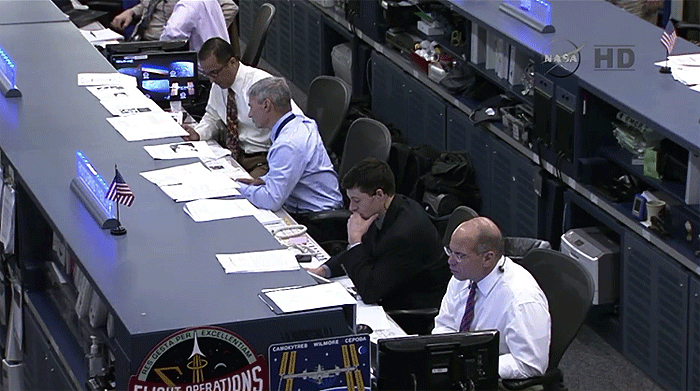
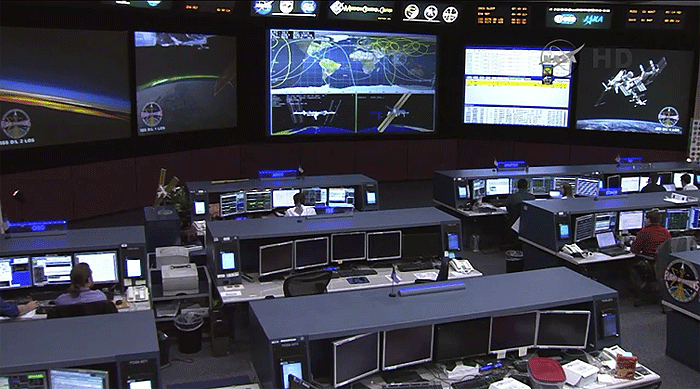
...15.00
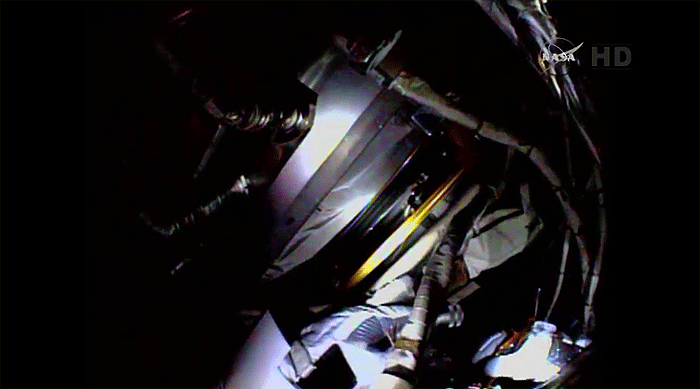
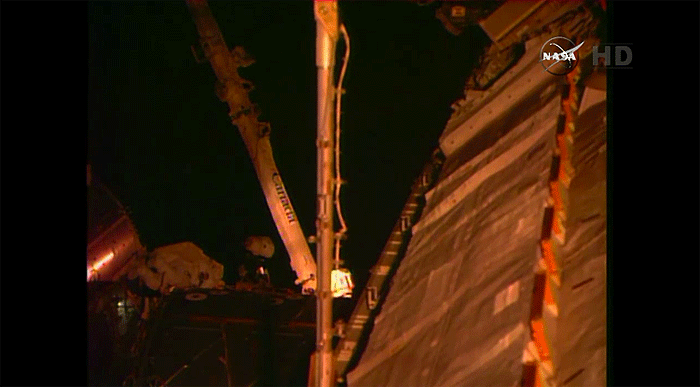
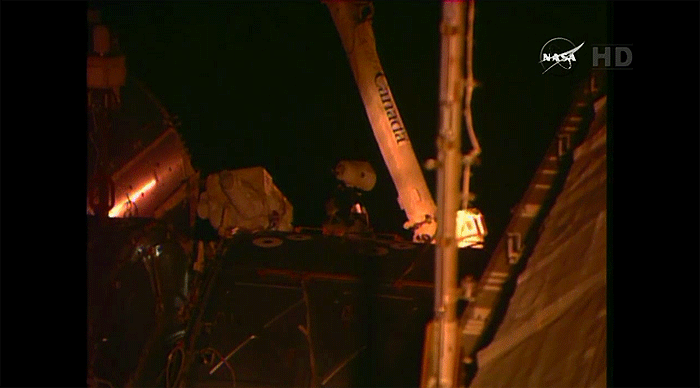
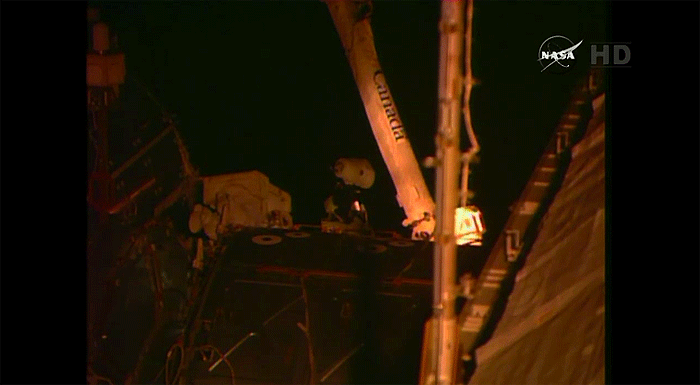
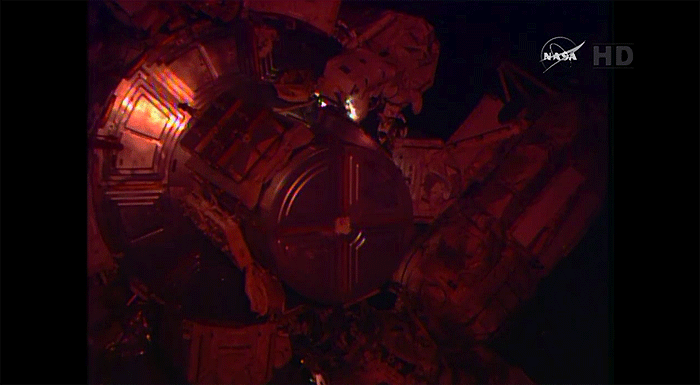
...15.15 MEZ
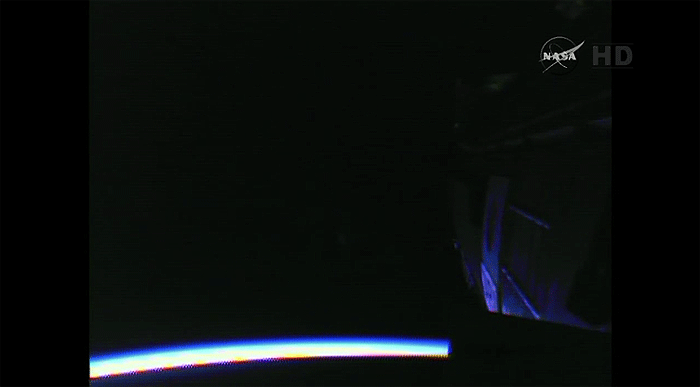
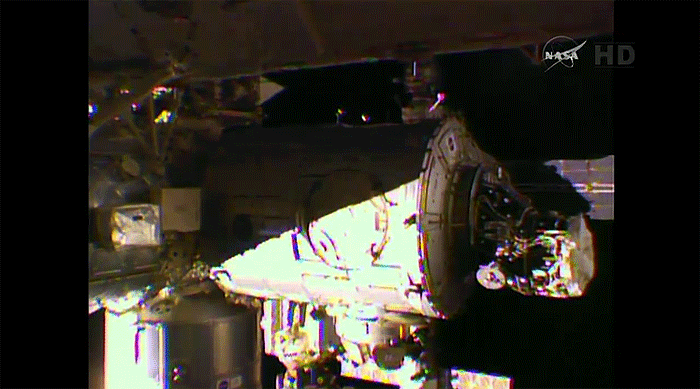
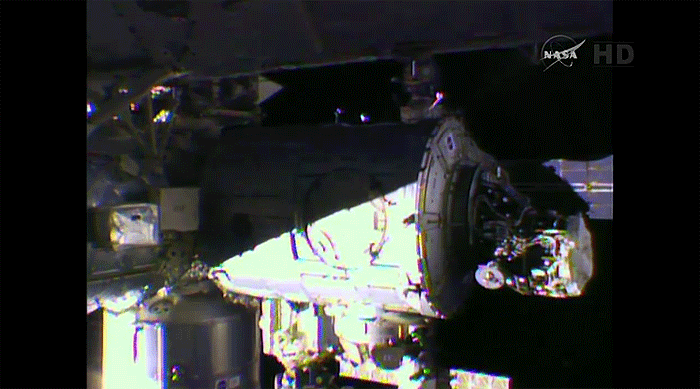
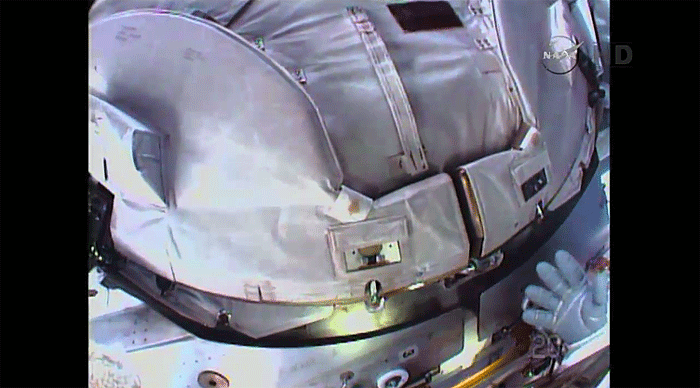
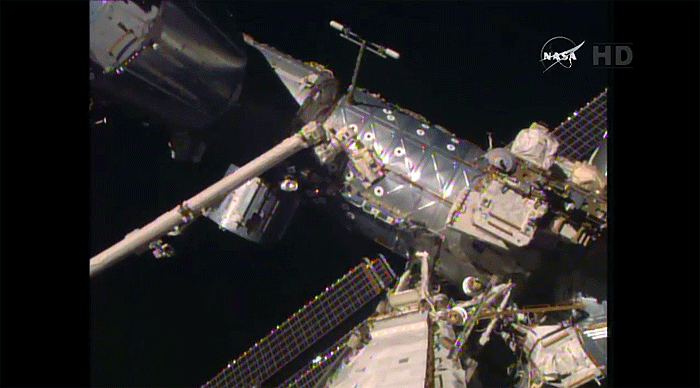

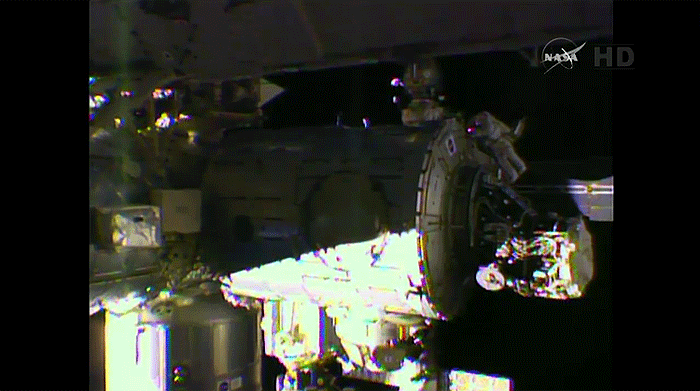
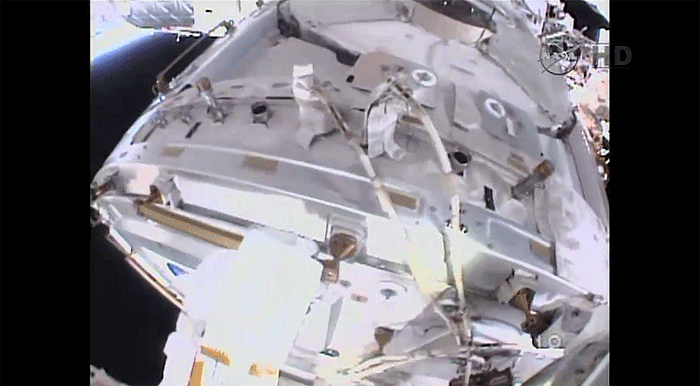
...15.30 MEZ
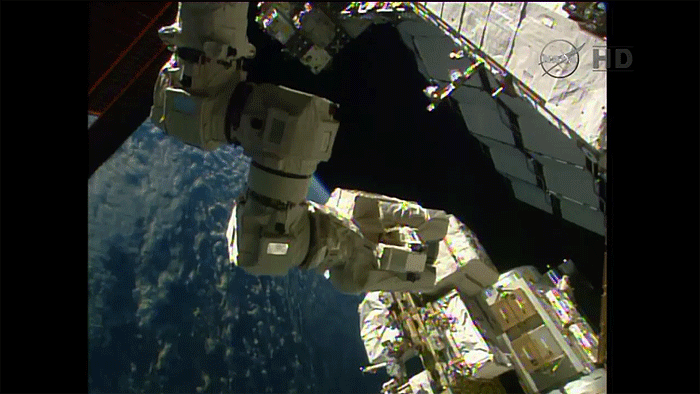
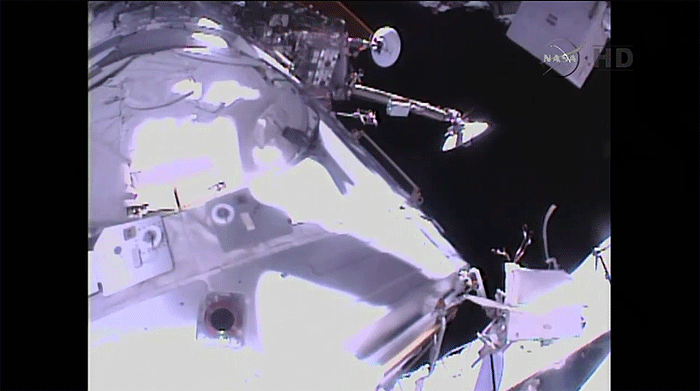
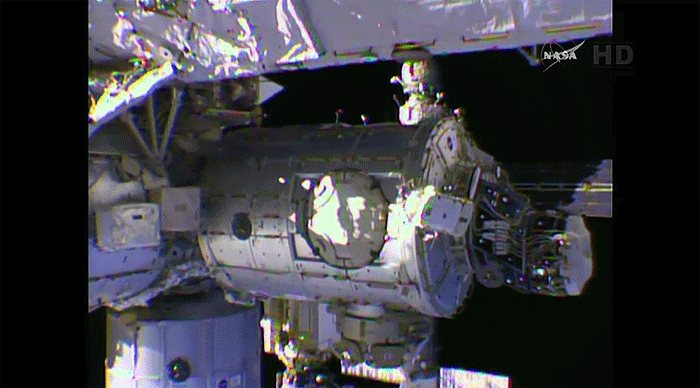
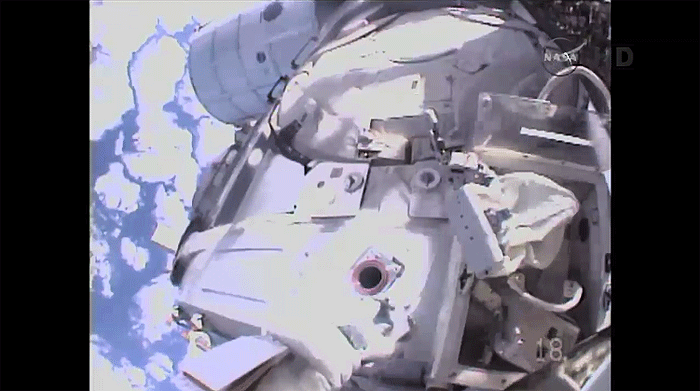
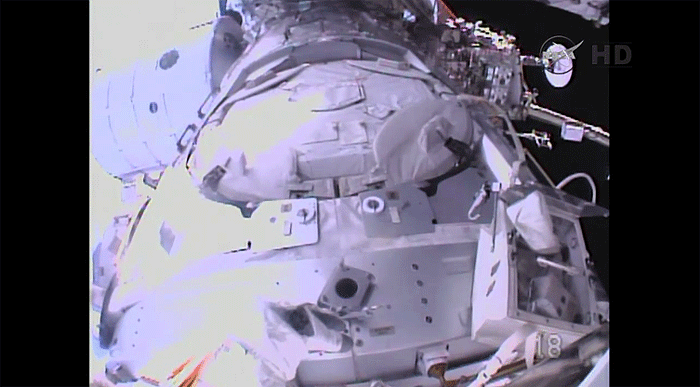
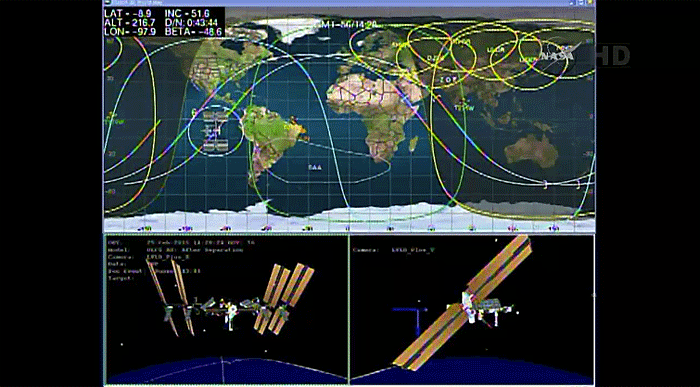

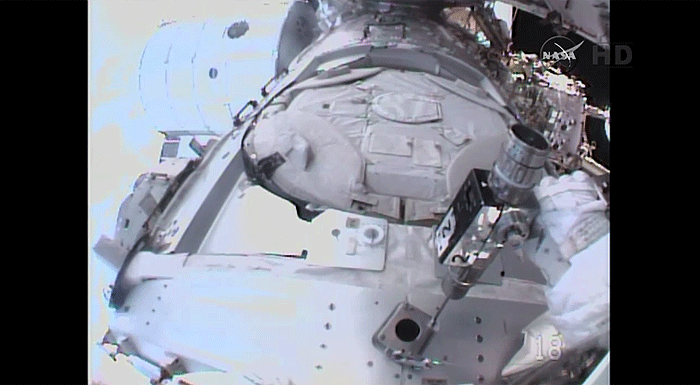

...16.05 MEZ
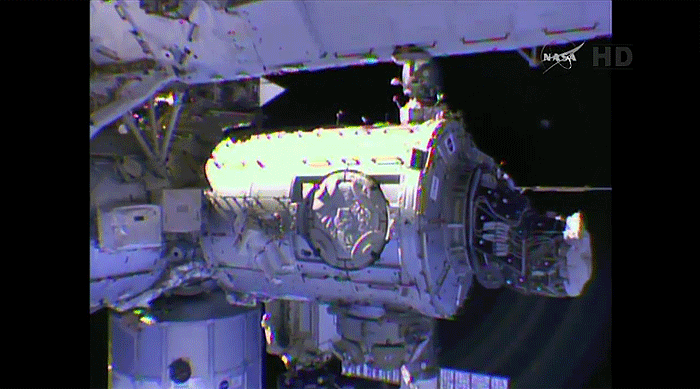


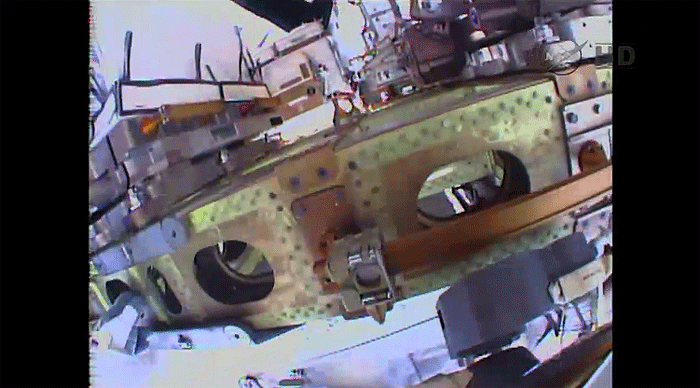
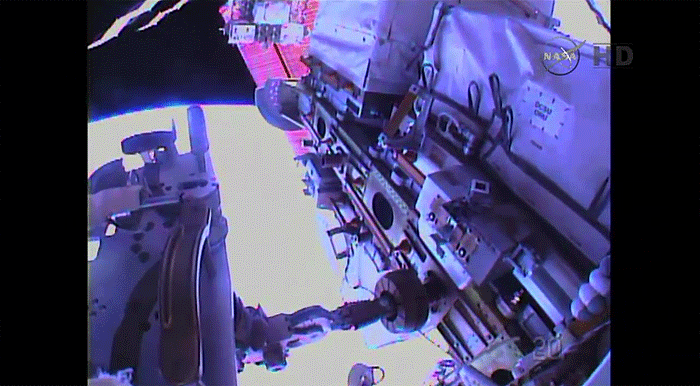
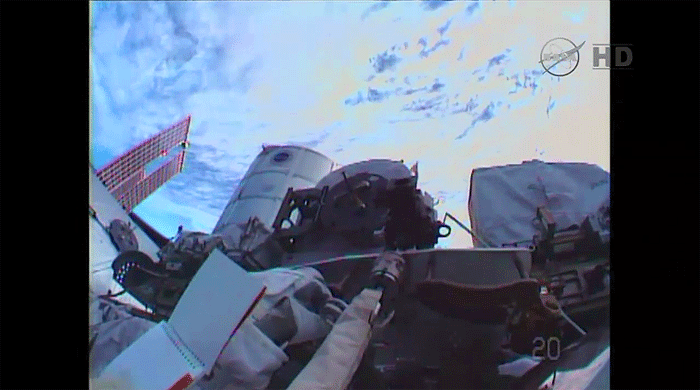
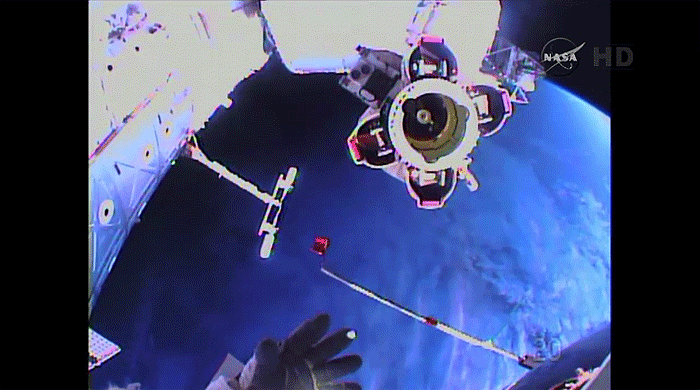
...16.30 MEZ
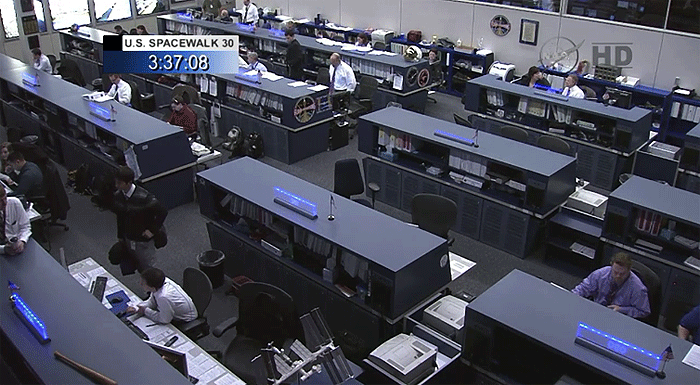
...18.00 MEZ
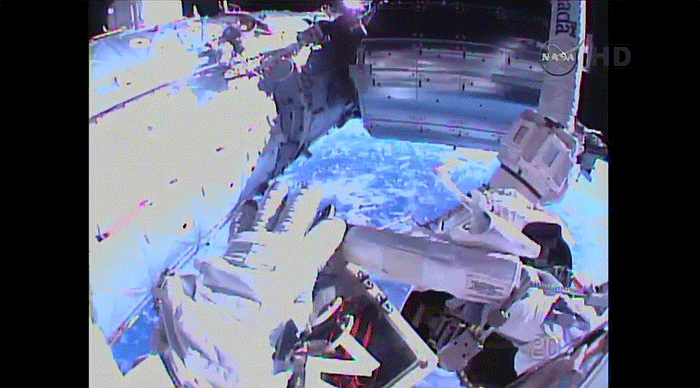
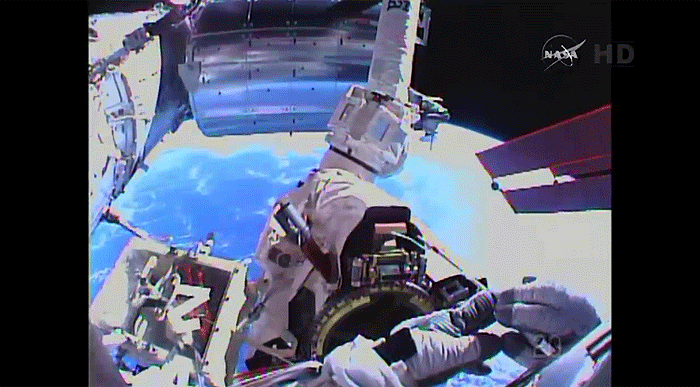
...
4525 Views
